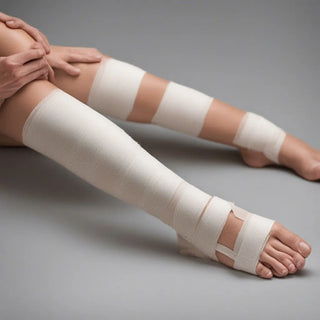Chronic ulcers are open sores on the skin that are slow to heal and can persist for weeks, months, or even years. Unlike acute wounds that typically heal within a few weeks, chronic ulcers have an underlying pathology that impairs the normal healing process.
What Causes Chronic Ulcers?
Common causes and contributing factors include:
- Impaired circulation - Reduced blood flow deprives tissue of oxygen and nutrients needed to heal. This can be caused by peripheral artery disease, venous insufficiency, lymphedema.
- Diabetes - High blood sugar levels lead to nerve damage (neuropathy) and impaired immunity and circulation. Diabetic foot ulcers are a common complication.
- Pressure - Constant pressure deprives tissue of blood flow leading to breakdown and ulcer formation. Common with immobility or paralysis.
- Poor nutrition - Deficiencies in protein, vitamins, minerals impede tissue regeneration and healing.
Underlying Pathology
In addition to these contributing factors, chronic ulcers show impaired healing at the cellular level:
- Increased inflammatory response - This causes swelling, redness, warmth, pain.
- High levels of matrix metalloproteinases - These enzymes start breaking down healthy tissue.
- Bacterial colonization - Bacteria never fully clear despite antibiotic treatment.
- Abnormal fibroblasts - These cells don't stimulate regeneration of skin & blood vessels.
- Other cellular dysfunctions - Impaired immune cells, low growth factors.
Chronic Ulcer Types
Common chronic ulcer types include:
- Diabetic foot ulcers
- Venous leg ulcers
- Arterial ulcers
- Pressure ulcers/bedsores
Proper diagnosis guides appropriate treatment to not just manage the wound but address the underlying cause. Advanced treatments also aim to correct the cellular environment and kickstart healing.
Chronic ulcers form due to impaired healing processes in the body, whether from poor circulation, diabetes, pressure or other factors. Understanding the underlying pathology helps health providers determine optimal treatment approaches.
Disclaimer: This article provides general information and is not medical advice. Consult a doctor for any chronic ulcer diagnosis and treatment.
References
Demidova-Rice, T. N., Geevarghese, A., Herman, I. M. (2012). Bioactive peptides derived from vascular endothelial cell extracellular matrices promote microvascular morphogenesis and wound healing in vitro. Wound Repair and Regeneration, 20(1), 59–70.
https://doi.org/10.1111/j.1524-475X.2011.00752.x
Frykberg, R. G., & Banks, J. (2015). Challenges in the treatment of chronic wounds. Advances in Wound Care, 4(9), 560–582.
https://doi.org/10.1089/wound.2015.0635
Morton, L. M., & Phillips, T. J. (2016). Wound healing and treating wounds: Differential diagnosis and evaluation of chronic wounds. Journal of the American Academy of Dermatology 74(4), 589-605.
https://doi.org/10.1016/j.jaad.2015.08.068
Stay tuned for more insightful content on the role of nutrition in health and healing from Condition Directed Supplements.
